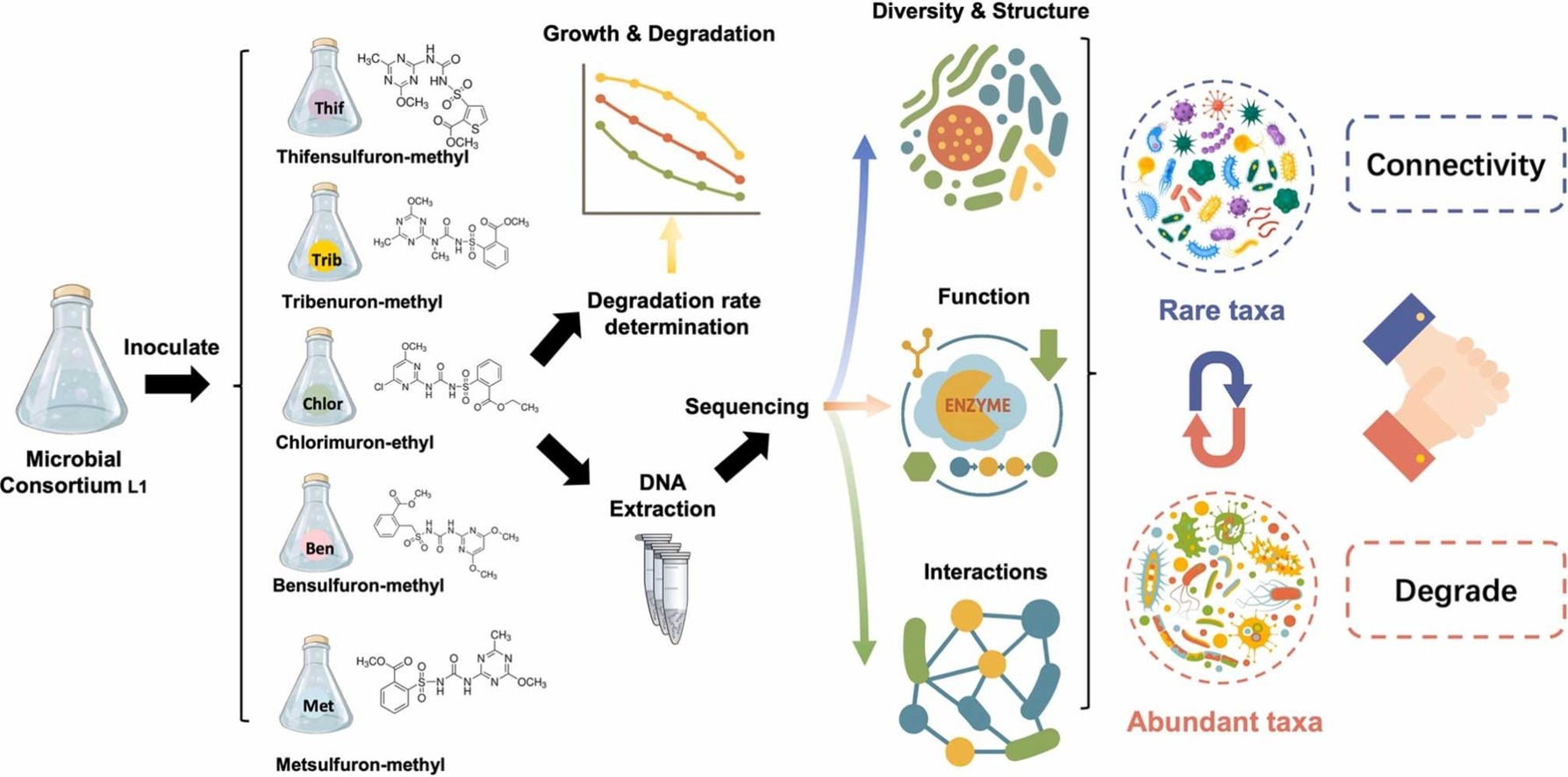
A research team from the Institute of Applied Ecology (IAE) of the Chinese Academy of Sciences has clarified the structure and function of synthetic microbial consortia, providing new insights for bioremediation of complex soil pollution.
Their results were published in Environmental Technology & Innovation.
Synthetic microbial consortia, which are engineered groups of microbes designed to work together, offer distinct advantages over single microbial strains, such as functional redundancy, greater stability, and higher resistance to environmental stress. These properties make consortia particularly promising for the bioremediation of soils contaminated by multiple pollutants.
However, the structural dynamics, functional assembly, and interaction mechanisms of such consortia under different substrate conditions remain poorly understood. In particular, the specific roles of rare microbial taxa versus dominant ones in maintaining system stability and functional diversity have not been fully elucidated. This knowledge gap impedes the rational design of efficient synthetic microbial consortia for precision farmland remediation.
To address this challenge, Dr. XU Mingkai's research team at IAE has been conducting long-term research on synthetic microbiomes for managing non-point source pollution. In their latest study, the team reported constructing a synthetic consortium, designated L1, capable of broad-spectrum sulfonylurea herbicide degradation. Sulfonylurea herbicides are a widely used class of weed killers. This advance offers an effective solution for remediating soils with complex herbicide contamination.
The researchers revealed L1's community assembly mechanisms in response to different herbicide substrates, with a particular focus on the dynamic interactions between dominant and rare microbial taxa. They found that L1 could efficiently degrade five common sulfonylurea herbicides (including chlorsulfuron, bensulfuron, metsulfuron, pyrazosulfuron, and thifensulfuron), demonstrating its stable and broad-spectrum degradation capacity.
They identified genera such as Methyloversatilis, Pseudoxanthomonas, and Chitinophaga as core drivers of degradation. They found that rare taxa play a vital role in maintaining microbial network stability, further revealing that under certain substrate conditions, dominant and rare groups could even switch roles, which challenged the traditional view that only dominant taxa drive community function.
Further analyses revealed that key enzymes, such as glutathione transferases and ureases, contribute differently depending on the substrate, illustrating the coexistence of functional redundancy (where more than one type of microbe can fulfill the same function) and substrate adaptability. In addition, they found that positive interactions dominated within the consortium, and that the complexity and intensity of these interactions increased with substrate diversity.
These findings advance our understanding of how broad-spectrum, herbicide-degrading consortia carry out their ecological roles and highlight the crucial interplay between rare and dominant taxa in sustaining both community stability and functional diversity. These insights provide a new theoretical framework and technical pathway for the rational design and application of synthetic microbial consortia in agricultural soil remediation.

Schematic illustration of the functional mechanisms of the broad-spectrum herbicide-degrading consortium L1 (Image by LI Xiang)

86-10-68597521 (day)
86-10-68597289 (night)

52 Sanlihe Rd., Xicheng District,
Beijing, China (100864)

